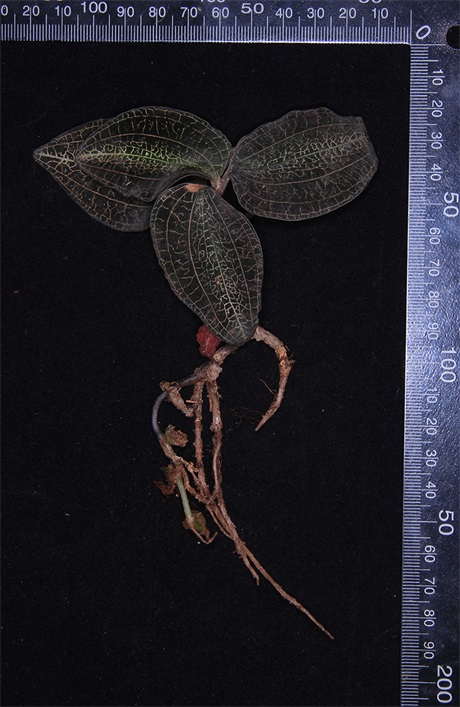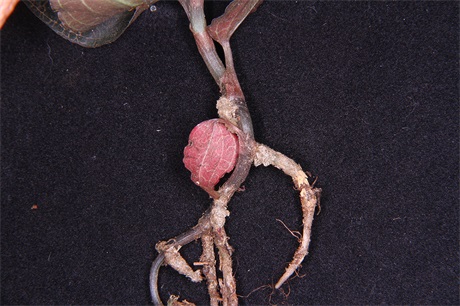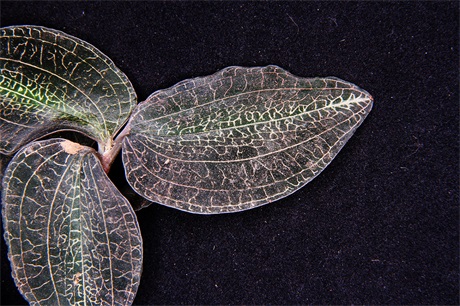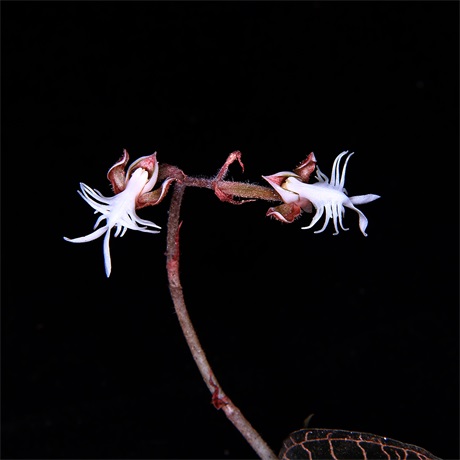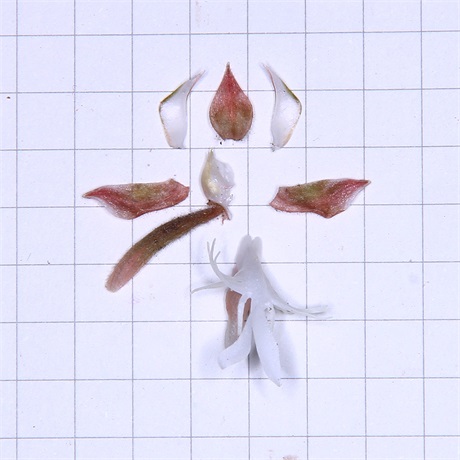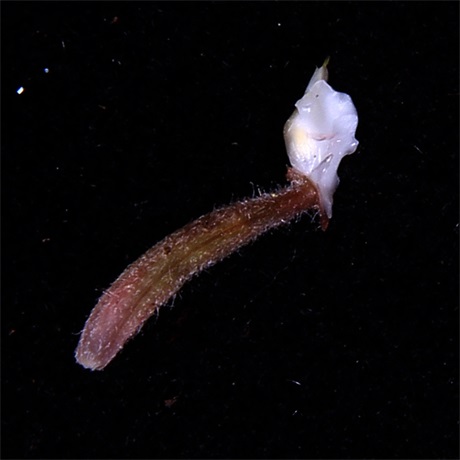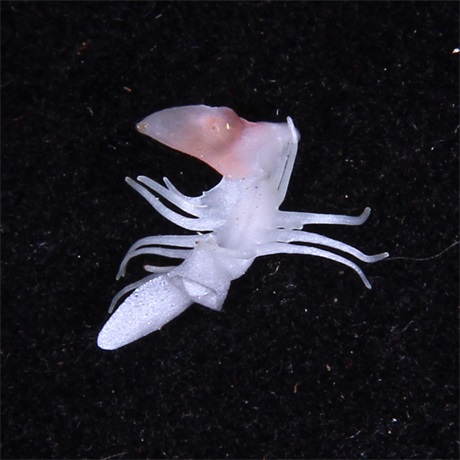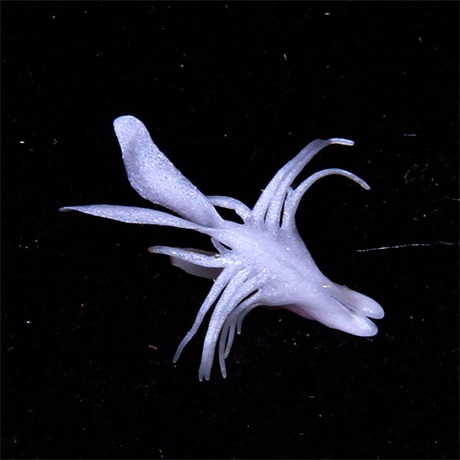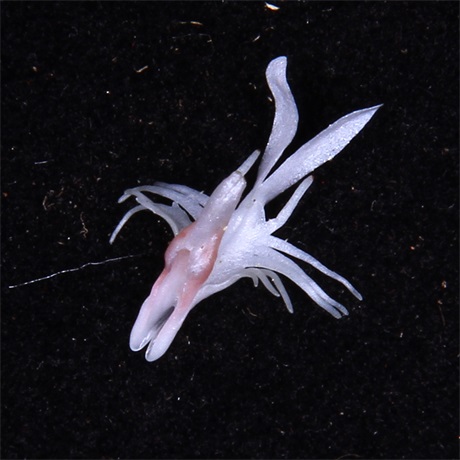金线兰(新拟)
花叶开唇兰(中国高等植物图鉴、海南植物志、浙江植物志、福建植物志、中国兰花全书)
Anoectochilus roxburghii (Wall.) Lindl. in Royle, Ill. Bot, Himal. 368. 1839 et Gen. Sp. Orch. Pl. 499. 1840; Rolfe in J. Linn. Soc. Bot. 36: 42. 1903. (excl. A. Henry 1626)Schltr. in Fedde Repert. Sp. Nov. Beih. 4: 176. 1919. (excl. loc. Formosa); S. Y. Hu in Quart. J. Taiwan Mus. 25(1-2): 49. 1972,(excl. A. Henry 1626); 中国高等植物图鉴5: 666, 图8161. 1976; 海南植物志4: 203, 图1093. 1977; Seidenf. in Opera Bot. 114: 31. 1992; 浙江植物志7: 521, 图7-697. 1993; 福建植物志6: 666,图594. 1995.——Chrysobaphus roxburghii Wall. , Tent. Fl. Nepal. 37, t. 27. 1826. ——Anoectochilus roxburghii Lindl. (ex Wall. , Numer. List: 247, n. 7387, 1832,nom. nud. )
14a.金线兰(原变种)图版30:5 8
Anoectochilus roxburghii (Wall.) Lindl. var. roxburghii
Evergreen broad-leaved forests, damp valleys; 100-1600 m. Fujian, Guangdong, Guangxi, Hainan, Hunan, Jiangxi, Sichuan, SE Xizang, Yunnan, Zhejiang [Bangladesh, Bhutan, India, Japan, Laos, Nepal, Thailand, Vietnam]. This variety is used as folk medicine.
This variety is widely distributed from Simla in India along the Himalayas to most provinces in the south of the Yangtze River Basin in China, eastward to Japan and southward to Indochina. The number ( 6-8 ) of tassel-like fine lobes on both sides of the claws and the flowering time have some changes in some provinces of China. Flowering : Southeastern Tibet ( Medog ) is August, Zhejiang September-October, Guangdong, Hainan, Fujian, Yunnan 10-11 ( -12 ) months, Guangxi October-December. |
| |
Plants 8-20 cm tall. Stem erect, 2-5-leaved. |
| |
Leaves abaxially pale purplish red, adaxially dark green to blackish purple with pinkish golden reticulate venation, ovate to ovate-orbicular, 1.3-4.5 × 0.8-3.6 cm, apex acute; petiole-like base and tubular sheath 0.6-1.8 cm. |
| |
Peduncle 7-15 cm, with 2 or 3 pinkish sterile bracts; rachis 1-5 cm, 2-10-flowered; floral bracts pinkish, ovate-lanceolate to lanceolate, 6-9 mm, shorter than ovary, apex acuminate. Flowers usually erect, not resupinate; ovary and pedicel narrowly cylindric, not twisted, 10-15 mm, pubescent. Sepals pinkish, outer surface pubescent, 1-veined; dorsal sepal ovate, cymbiform, ca. 6 × 2.5-3 mm, apex acuminate; lateral sepals spreading, oblong to oblong-elliptic, 7-8 × 2.5-3 mm, apex subacute. Petals pinkish white, ovate-elliptic, strongly oblique, 7-8 × 2-2.5 mm, 1-veined, apex acuminate; lip pinkish white, Y-shaped, 10-16 mm; hypochile 2-4 mm; mesochile reflexed at right angle from apex of hypochile, 4-5 mm; flanges 6-8-laciniate, each filament 2.5-6 mm; epichile longitudinally dilated, 2-lobed; lobes diverging at an acute angle to one another, obovate-oblong to spatulate, entire, 5.5-8 × 1.5-2.2 mm, apex obtuse; spur conic, 3-4.5 mm, apex shallowly bilobed, mouth ca. 1.5 mm in diam., containing 2 irregular, fleshy calli near entrance. Column ovoid, ca. 2.5 mm, with 2 broad, lamellate wings; stigma lobes elliptic. Fl. Aug-Dec. |
| |
| ||
|
| |
|
| |
14b.Paoting Anoectochilus roxburghii ( Plant Taxonomy ) ( Variety )
Anoectochilus roxburghii ( Wall. ) Lindl.var.baotingensis K. Y. Lang in Acta Phytotax, Sin. 34 ( 5 ) : 557. 1996.
The difference between the present variety and the original variety is that there are only three thin, filiform lobes 2.5-3 mm long on each side of the claw margin of the lip. Flowering April. The inflorescence of this variety has 2-12 flowers.
Hainan ( Baoting Taipinggang ). Born at an altitude of about 320 meters in the forest stone overlying soil. Type specimens are collected from here.
